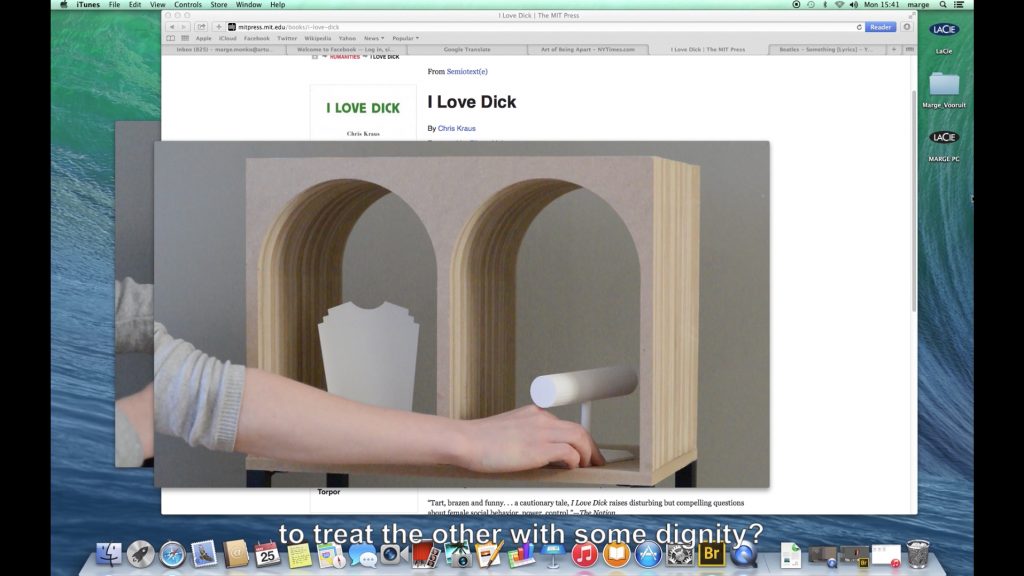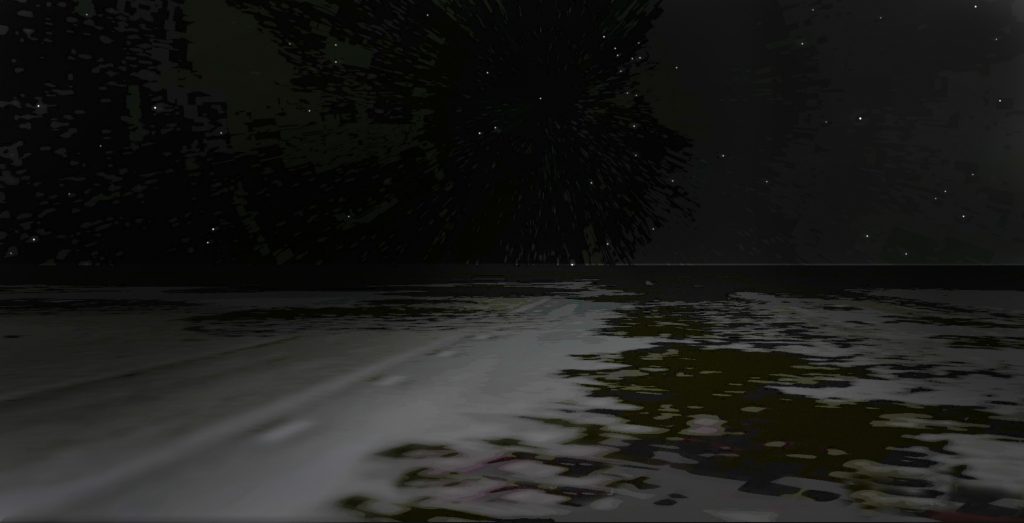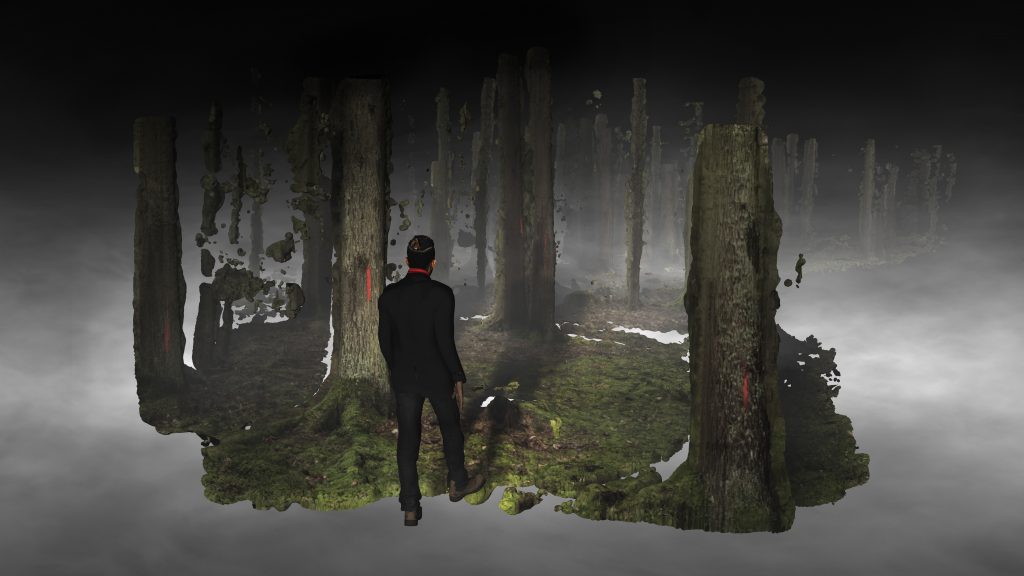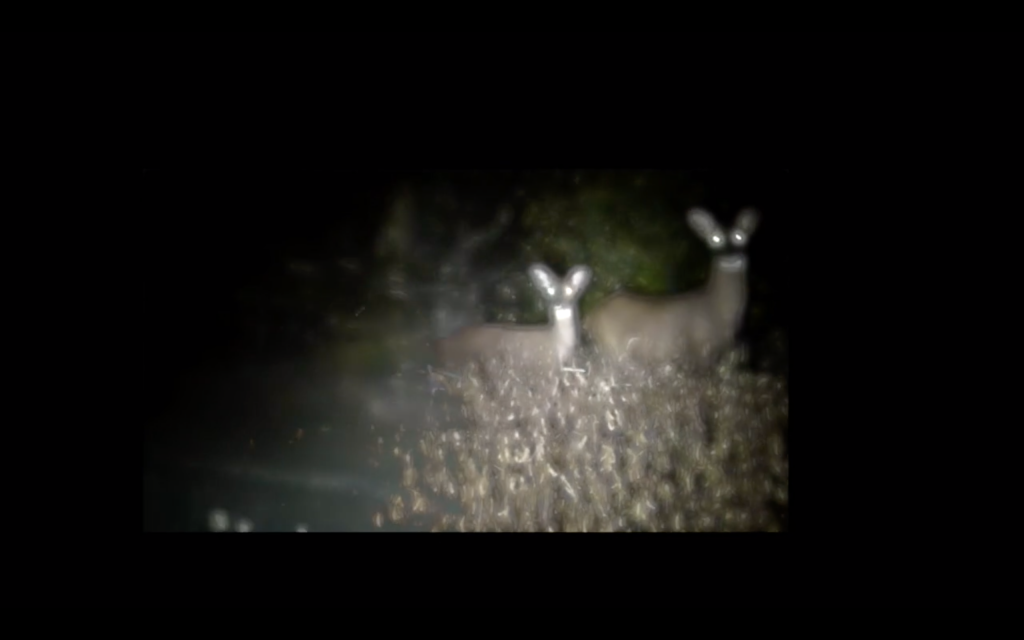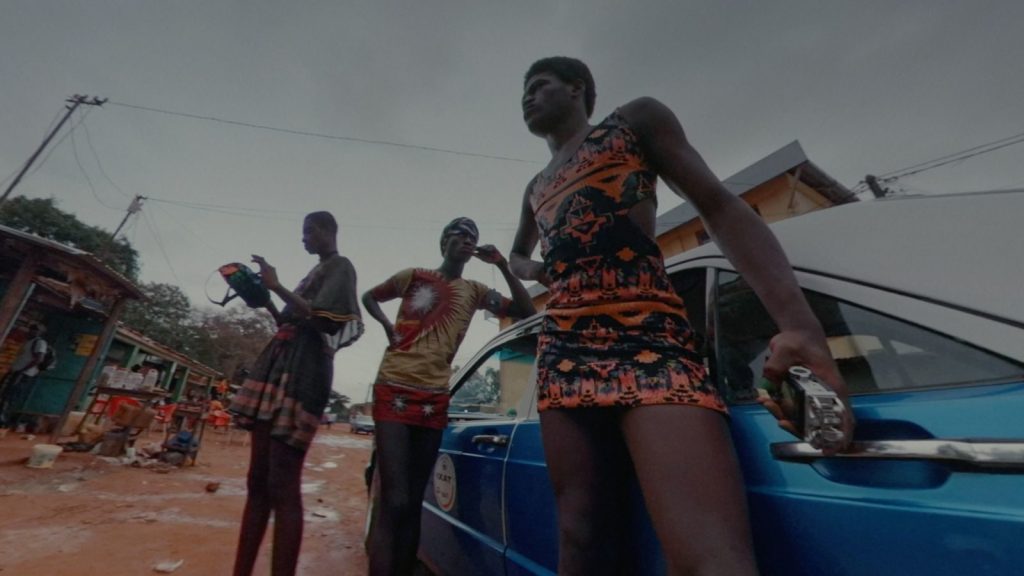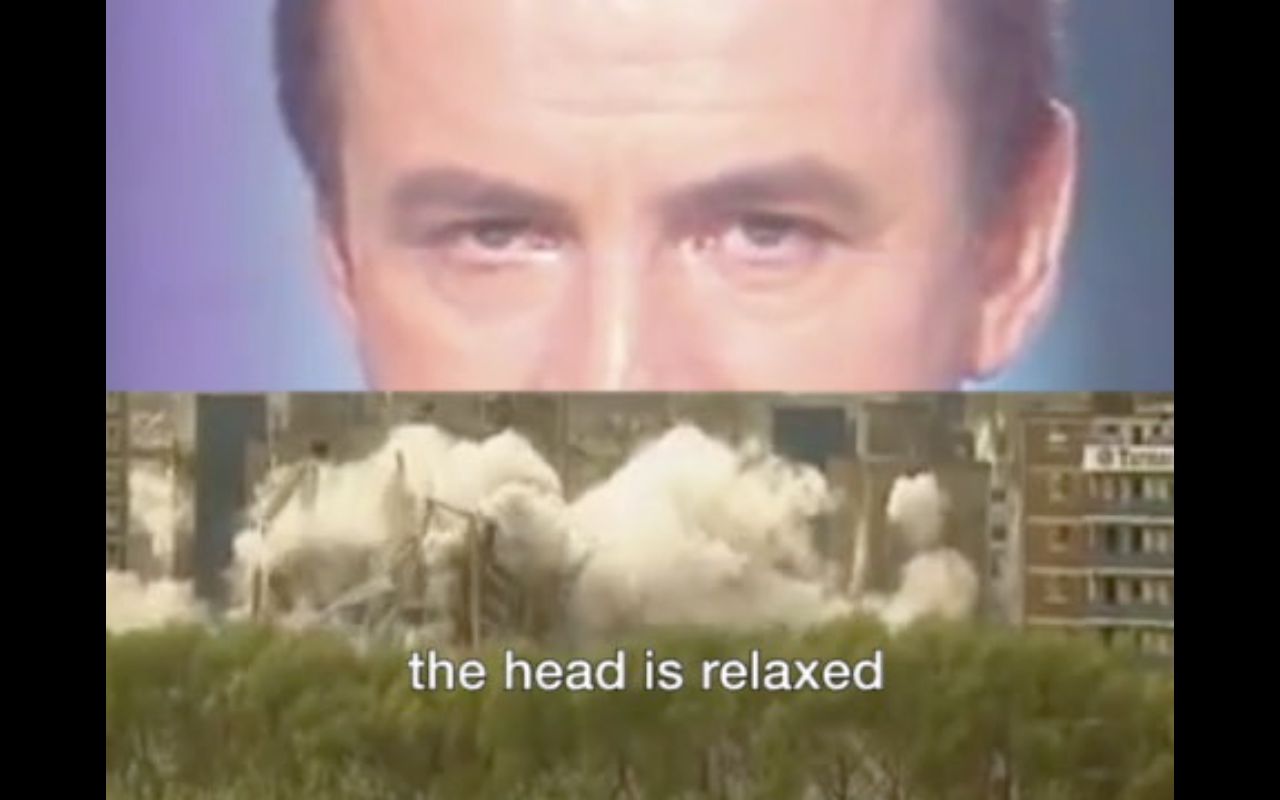The contents of this programme have been put together quite intuitively while on a lookout for parallels between technological video change and imagination. Trying to define works by five artists, resulted in the programme’s title, Videoimagination. How do produced images reflect our imagination and what impact do they have on its shaping? Thinking of visual memory as a never-ending film and seeking to identify connections between the conscious and the unconscious with video technology, we called the programme Videoimagination, emphasising a mutual relation between video and imagination, technology and gaze.
All works in this programme explore various spaces — digital, experiential, observational. Work by Marge Monko, Dear D, reflects sensitive and intimate connections not only between two people, but also between inner feelings and technological design. Polak van Bekkum’s The Ride takes place in the virtual world of Google Earth, but the emotional experience occuring in the real world challenges the differences between the two. Broersen and Lucacs use digital devices in Forest on Location to recreate the Białowież forest which is facing extinction, whereas in Allison Henriquez’s Nocturnal Motion the spectator becomes suspended in the experience and immersed into a dreamlike state. Mariano Blatt and Eduardo Williams’ film, Parsi creates one more videoimagination with its poetic space which exists neither in 360-degree captured Guinea-Bissau nor in a poem about that which does not exist.
Curated by Milda Januševičiūtė and Monika Lipšic
